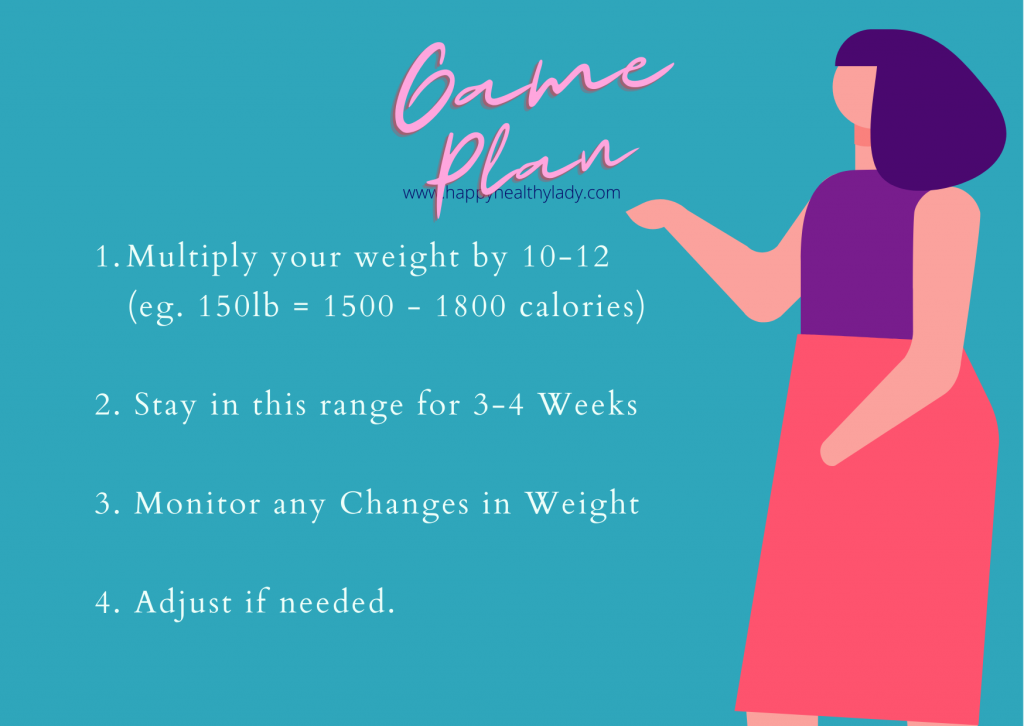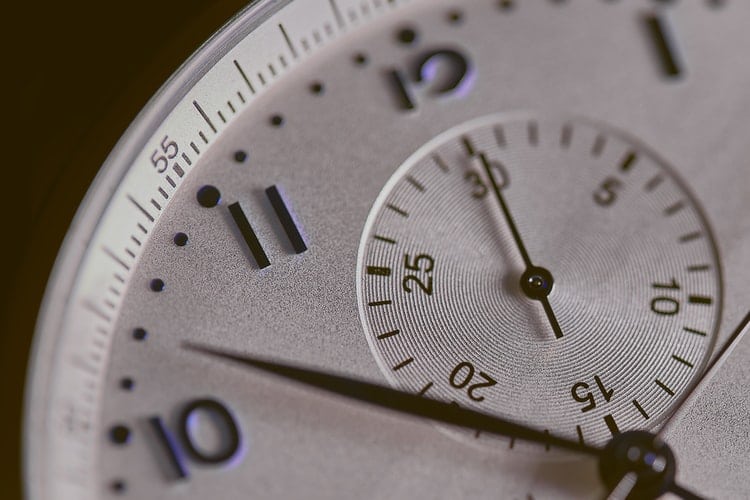So, what is calorie deficit?
Too embarrassed to ask “What is calorie deficit”? No problem, we’ve got you!
A calorie deficit happens when your body consumes more calories than it burns. This causes you to lose weight and become healthier! In this article, we will discuss 10 steps that can be taken to create a calorie deficit.

The relationship between deficit & weight loss
Most people think of calorie deficit as a quick-fix method to lose weight. That’s not necessarily true! Your calorie intake is only one factor for how quickly you will see results from your workout routine. In order to create a calorie deficit, it might be helpful to increase the amount of calories burned through exercise and sleep deprivation. This can help offset any extra food that may have been consumed over the day or week.
How do I create a Calorie Deficit?
How do I know if my weight is less than body weight? To lose weight, you need to consume fewer calories and consume fewer calories than your body needs each day.
Put simply: Less energy (calories) in = less energy stored as fat. Just eat fewer calories or increase energy expenditure to meet your weight loss goals.
Many women also find intermittent fasting can help kick-start weight loss and accelerate results. We’ve recently covered the 16/8 Method, click here to learn more.
Not all Calories are made equal
Before focusing on creating a calorie deficit, it’s important for you to know how many calories are in each food item and how they may differ.
Let’s begin by looking at how a calorie is actually defined:
“A calorie is the amount of energy needed to raise one kilogram (or liter) of water by one degree Celsius. One calorie equals 1000 heat units and this can also be described as kcals or kcal – large-scale calorie measurement systems often use “calories” as shorthand when they mean kilocalorie(s).”
Recent research has shown that calorie counts on food packaging are not always accurate:
– a calorie is not always 1000 calories (depending on the type of food) and can be rounded off inaccurately.
– fat and sugar are more calorie dense than protein or carbs, which means you must consume fewer grams to get same amount of calories
Counting only calories ignores the metabolic effects of each calorie. The source of the calorie changes how your digest it and how you retrieve energy from it. Fo
Sugar consumption has been documented to have a direct correlation with weight gain and increased risk of coronary heart disease. This study was funded by the Sugar Research Foundation (SRF) from approximately 50 years ago. The SRF analyzed fat as a contributor to heart disease, but not cholesterol. Despite this finding, the study concluded that sugar intake is primarily responsible for obesity rates in America today and should be the main target when it comes to reducing added sugars on people’s plates.
How do I know if my weight is less than body weight? What is a calorie deficit? And how should I start to feel confident in my pace when running? These are questions you can
Should I aim for a deficit of 500 Calories?
500 Calories is a great goal to aim for because it is a calorie deficit that most people can achieve without feeling like they’re starving themselves. It might be helpful to have a calorie counting app handy, so you know how many calories are in your favorite foods.
Make small changes in what and when we eat during the day or week! For example, try eating three low calorie meals throughout the day instead of two high calorie ones; this will help keep your body fueled with smaller portions while still providing it with enough energy.
If you are looking to burn more calories through being more active and physical activity, then a good example is by walking only three hundred-seventy five extra steps per day can lead to seven pounds lost on average within six months, no more excuses to drive to the local shop!
Take inventory & make adjustments as needed
Try looking over all of the foods that you have been consuming for one week (or more). Are there any items on this list that are not necessary? If so, remove them from future shopping lists and substitute healthier alternatives! Is there anything on this list that is being consumed too often? Try reducing portion size or making sure to schedule calorie consumption on your off days.
Is exercise required to lose weight?
In short: no. You don’t have to exercise for hours at a time in order to get results from calorie reduction! All it takes is small, healthy changes over the day that add up by nighttime! Try waking up earlier and doing some light cardio or strength exercises before you go into work; this will help keep your metabolism active throughout the day while also providing more energy when exercising later during your free time. You could even try taking a nap after lunchtime if you are feeling fatigued – sleep deprivation can act as an effective calorie-burning method too!
1. Eat less
Step one on how to create a calorie deficit is to eat less. This seems like an obvious step, but it is not as simple in practice. Remember that calorie count labels can be deceiving and can make you feel more full than you should. Furthermore, your body will start to use proteins from muscle mass instead of glucose for energy if carbs are scarce. This causes the metabolic rate to slow down because there is less fuel to burn and the calorie deficit will become harder to maintain.
Having fewer calories will also cause the calorie deficit to be more effective because it is easier for your body to burn fat.
So how many fewer calories should you eat? It’s important that calorie intake goes down gradually over time in order to maintain a calorie deficit, so aim for about 500-700 fewer calories per day. Remember that this will vary depending on your calorie needs, so it is important to experiment with calorie intake and see what works for you.
2. Move more
Moving more will help with your weight loss but by moving more you will also be burning calories. For example, just by walking for an hour a day, you will burn about 150 calories. This calorie deficit can then be used to help further reduce calorie intake or increase calorie expenditure.
There are also many other physical activities that have the same effect on your calorie balance and can make it easier to create a calorie deficit. These include but are not limited to:
– Sprinting
– Jogging
– Playing a sport or doing an activity that you enjoy for at least 30 minutes.
There are many calorie deficit hacks like these to help make it easier to create one! Remember though, they should be used sparingly and in moderation because too much exercise can lead to overtraining which is also bad for long-term weight loss.
Another calorie deficit hack is to move more throughout the day! Standing up at your desk instead of sitting down can help you burn an extra 150 calories per day, which will allow you to create a calorie deficit without changing anything else in your life.
Doing simple things like walking around while you wait for the kettle to boil or taking the stairs instead of an escalator can help you burn up extra calories.
An hour-long walk every day will also help with calorie burning and achieving a calorie deficit! The key is that it needs to be done consistently over time.

3. Sleep well
Weight loss and sleeping well go hand in hand. Sleep deprivation can cause insulin resistance, which causes the body to store fat and makes calorie deficits difficult.
It is important to sleep for at least eight hours per night so that you do not wake up tired or feeling groggy and have your day start off badly.
If this does not sound like something you are able to do, then it is important to start getting more sleep gradually.
For example, it may be necessary for you to move your bedtime back by a half-hour every day or so in order to make sure that this calorie deficit can be maintained and weight loss will still happen.
Doing something like drinking warm milk before going to bed can help with falling asleep faster and reduce the number of times you wake up at night.
Dealing with sleep deprivation can be difficult, but it is important that calorie deficit has a calorie surplus in order to help make weight loss easier!
4. Drink water
Swapping fizzy drinks for water will keep the number of calories down that you consume. Those who drink a lot of water usually find it easier to create calorie deficits because their body will need fewer calories and water can also help with feeling fuller.
Drinking plenty of fluids like black tea, green or white tea as well as coffee is important for maintaining good health but remember to limit the milk in these drinks so that you do not end up consuming too many calories.
It is also important to drink plenty of water because when you are dehydrated it can be harder for your body to regulate calorie intake and calorie burning rates which means that weight loss may become more difficult.
If you need a little extra motivation, try adding some lemon or lime juice to your glass of sparkling mineral water. This will make it taste much better and can help you to drink more of this calorie-free beverage!
Drinking plenty of fluids is important so that calorie deficit can be achieved easier without dieting or starving yourself.

5. Get enough sun exposure
Being exposed to the sun will lead to weight loss and will help you lose weight a lot easier.
It is important to get at least 15 minutes of sun exposure every day. This will lead to the body producing more vitamin D and it can help you feel brighter, happier and slimmer!

6. Reduce sugar intake as much as possible
Sugar is calorie-dense, and it can be difficult to make a calorie deficit when there are too many sugar calories being consumed.
It is important to reduce the number of refined sugars you consume as much as possible because this will lead to weight loss easier without dieting or starving yourself.
For example, instead of drinking regular juice, try drinking juice with lower sugar content. This will help you to reduce calorie intake and lead to calorie deficit without dieting or starving yourself!
7. Eat breakfast
Eating breakfast will help you to stay fuller for longer and it can also reduce calorie intake.
It is not necessary to eat a huge breakfast if you are trying to lose weight but eating something like oatmeal with fruit for breakfast will help you to lose weight easier.
Eating calorie-dense foods like cereal, toast and jam can increase calorie intake which makes it difficult to create a calorie deficit that is needed in order to lead to weight loss!
It is important not only for the sake of losing weight but also for the sake of your health that a calorie deficit is created.

8. Eat a healthy lunch and dinner
A healthy lunch and dinner is an important part of the calorie deficit.
For example, when you are cooking healthy stir fry for lunch try adding in ingredients like mushrooms, broccoli and eggplant instead of high-calorie ingredients like bacon.
To reduce calories, try having vegetables with rice as a side dish rather than calorie-dense foods like potatoes.
It is important to limit the use of butter and oils when cooking as well because these can increase calorie intake which makes it more difficult for weight loss to happen!

9. Do not eat junk food or fast food
Avoiding calorie-dense foods like junk food and fast food is another way to create a calorie deficit.
For example, try not having takeout or making a sandwich for lunch instead of ordering fried chicken from the menu at your local restaurant.
It is important to avoid calorie-dense foods because they can make it more difficult to lose weight.
Do not have calorie-dense foods like pizza, fast food and chocolate because this will make it difficult for you to lose weight.
10. Exercise at least 30 minutes each day, five days per week
Exercising is an important part of calorie deficit because it will help to increase calorie-burning rates.
It can also lead to weight loss easier without dieting if you exercise 30 minutes per day, five days per week!
An example would be doing some light cardio and then adding in a weight routine at the end.
Exercising is an important part of calorie deficit because it will help to increase burn rates.
Final Thoughts
Counting calories isn’t fun. But you know what is? Counting the pound of fat you lost!
So, what’s the best way to get rid of those unwanted pounds? The answer is simple. When you create a calorie deficit by eating less and exercising more, your body will be forced to burn fat for fuel instead of using it as insulation or energy storage. Try hard to increase physical activity at the same time reduce caloric intake, and the science says your body will drop weight.










